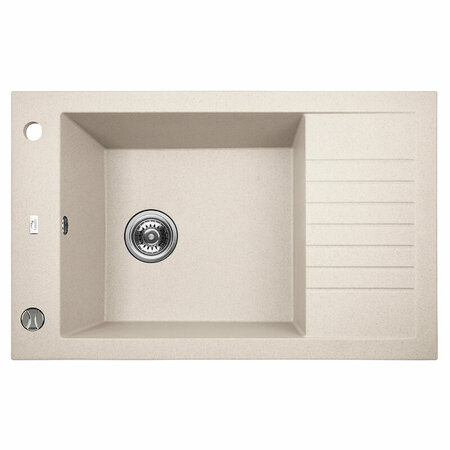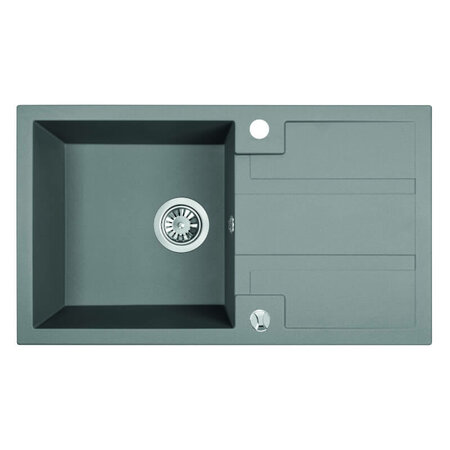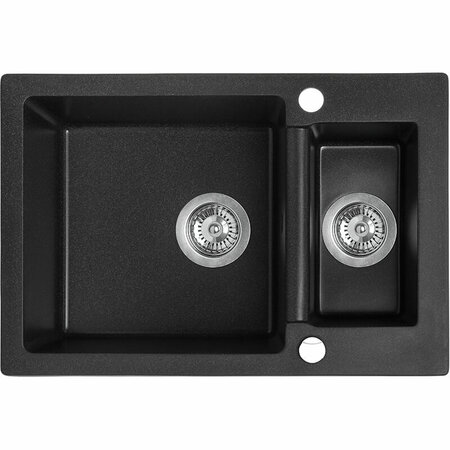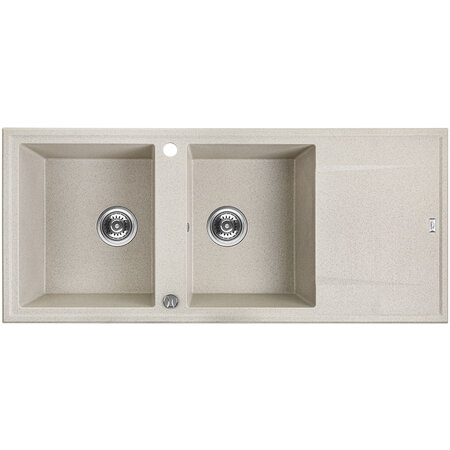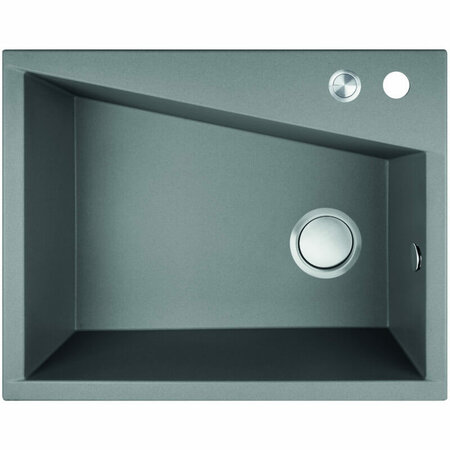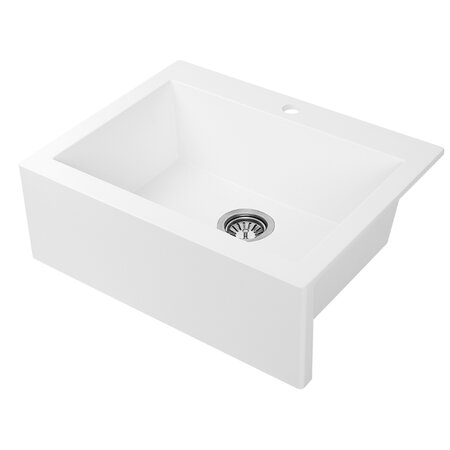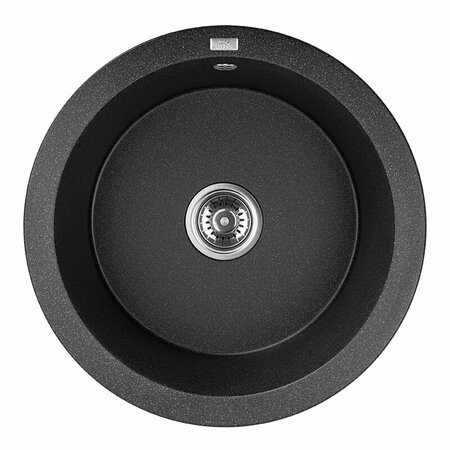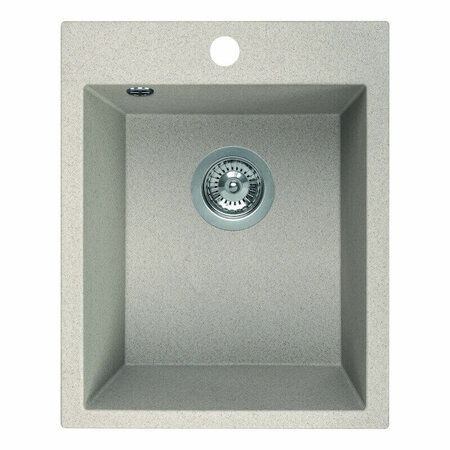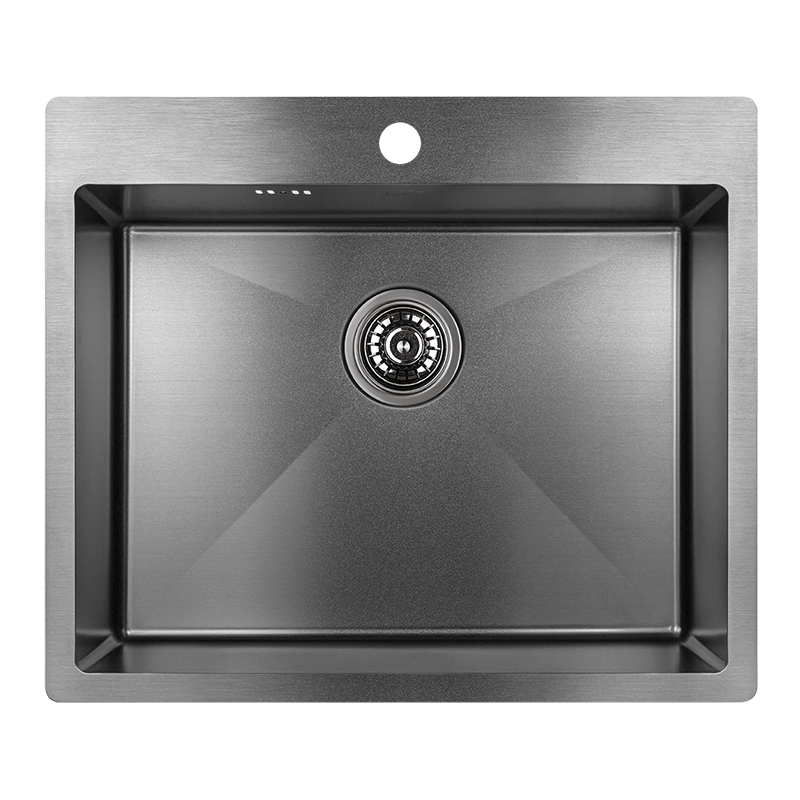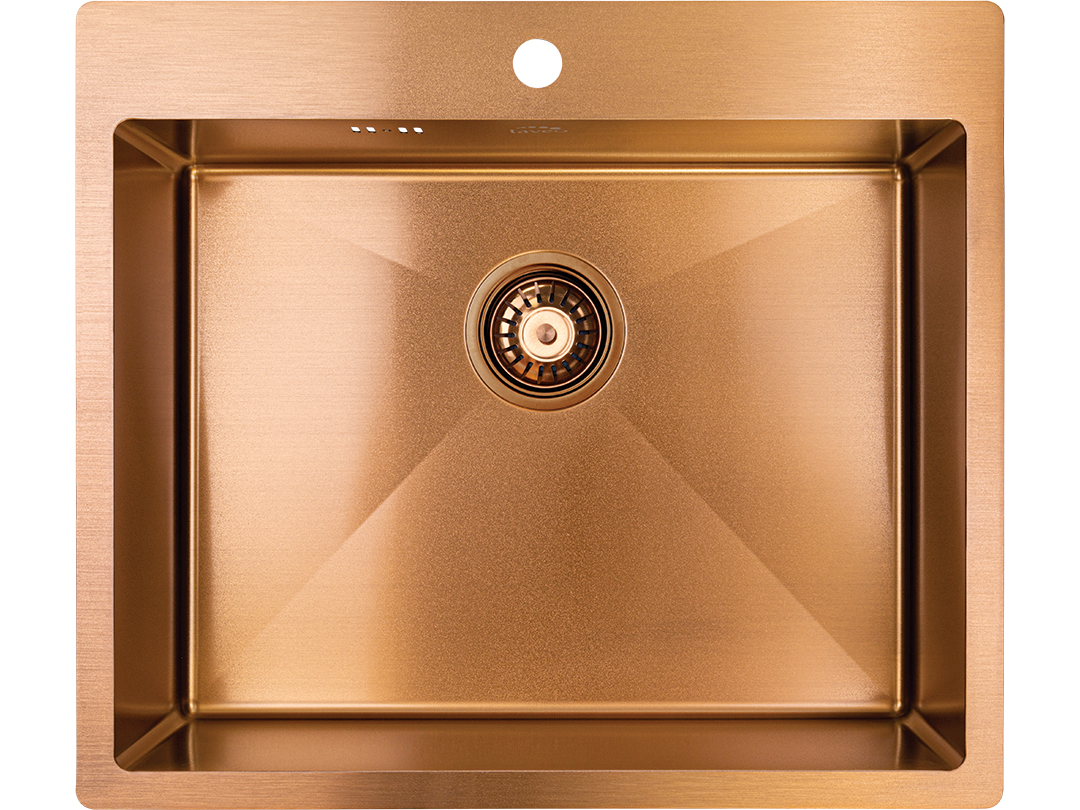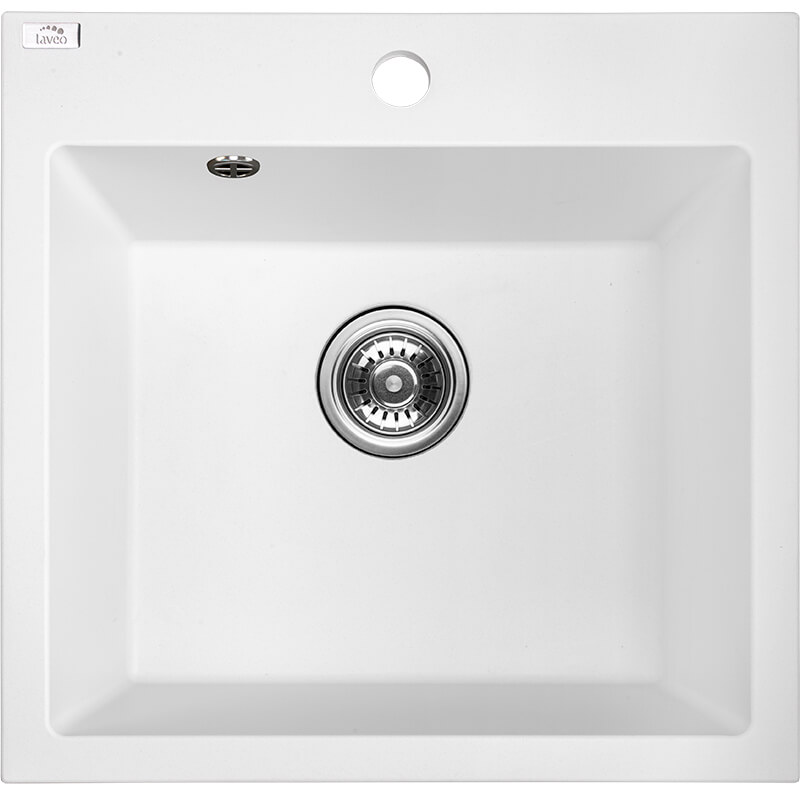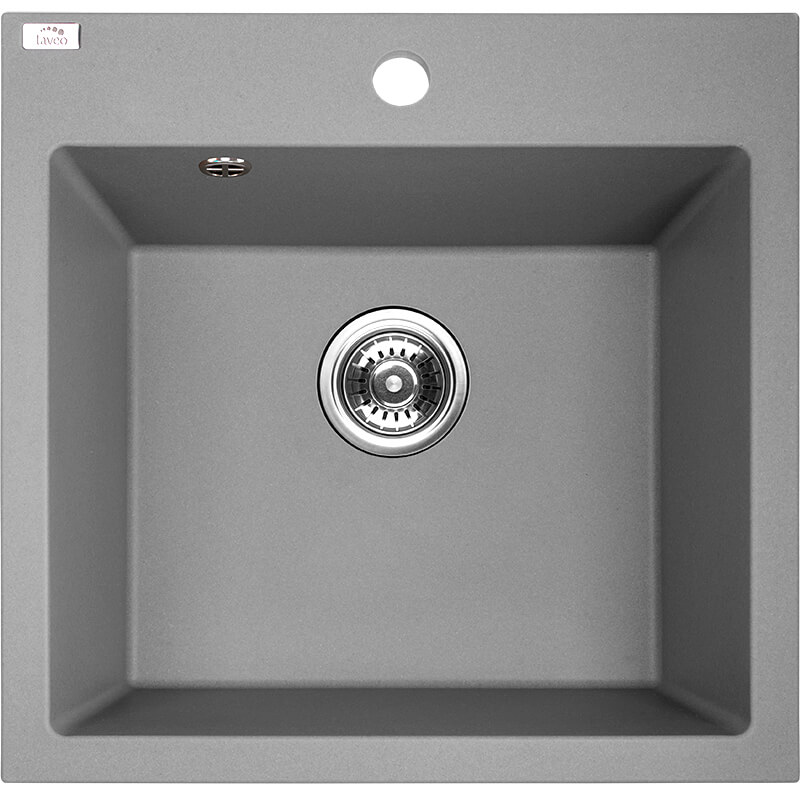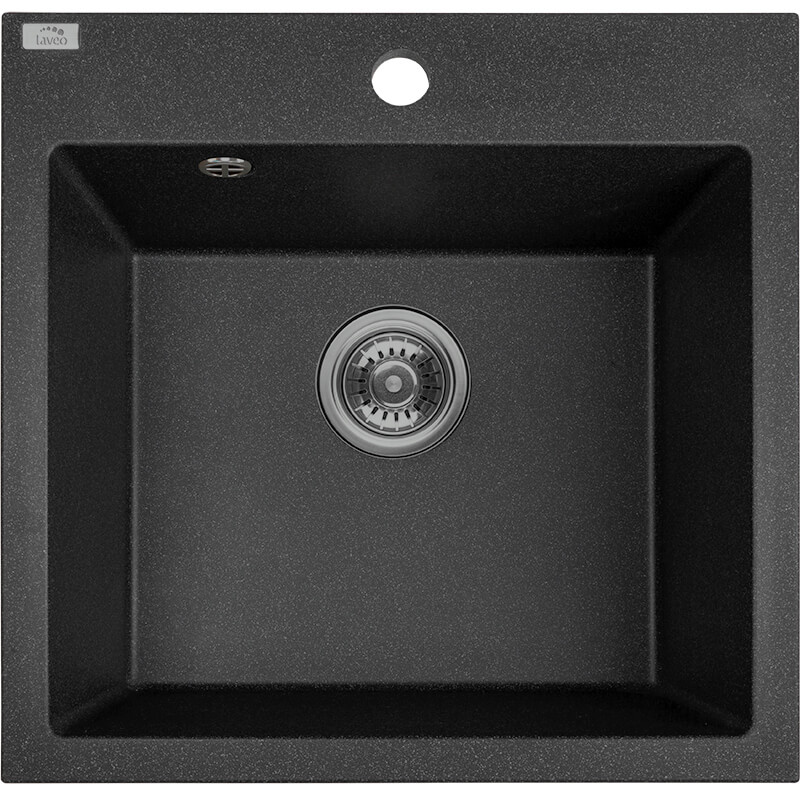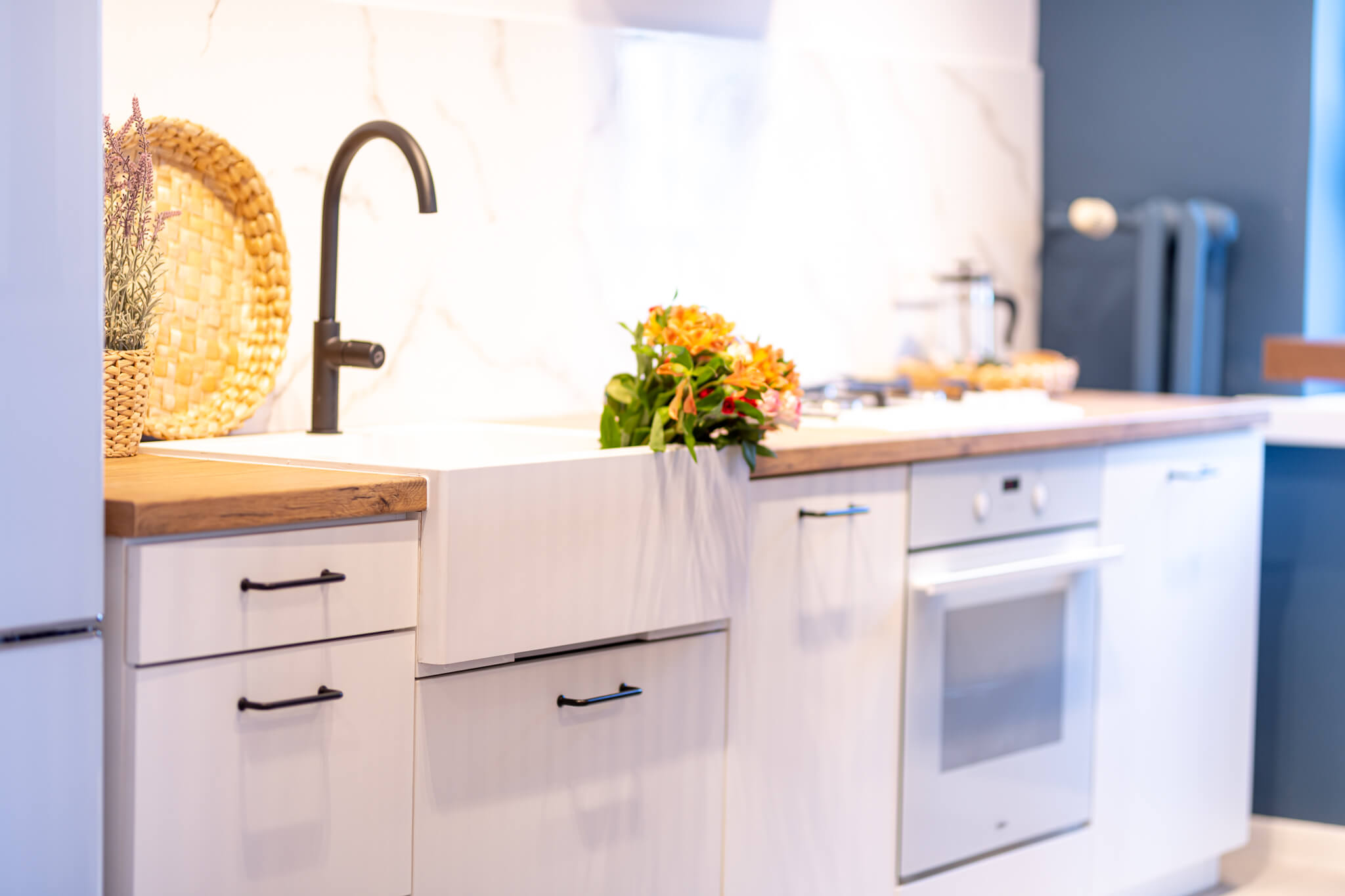
Even though washing up by hand is neither economical, effective nor convenient, and a dishwasher is increasingly becoming a “must have” purchase in the kitchen, the position of the sink remains unchallenged. It is used to wash single dishes or items that should not be put in a dishwasher (such as knives or wooden cutting boards), defrost food, rinse vegetables or fruit and fill pots with water. Often, the sink is located in a prominent place and draws the attention of those entering the kitchen. Therefore, it should be not only functional, but also visually appealing.
Based on our long experience in the interior design market we can safely say, using a popular expression, that people can be divided into two types: granite sink zealots and lovers of models made of steel. If you are still not sure which camp you belong to, we encourage you to read the text below, where you will learn everything you need to know about both sinks.
Design
|
The features of steel as a material make sinks made of it, regardless of their colour, have a rather austere look and suit modern kitchens. Steel models are also a very popular choice for industrial-style interiors, where they go well with metal decor elements. |
|
Granite, on the other hand, associated with stone, is a heavy material not only in terms of weight, but also its visual perception. The shell of such sinks is much thicker than that of their steel counterparts, which makes granite models seem more robust. Granite sinks are considered to be more universal in terms of design and fit in with most kitchens regardless of the style in which they are decorated. |
Colours
|
Steel sinks have long ceased to be exclusively silver. At present, you can choose from a wide range of colour-filled models, an excellent example of which is the Marmara sink available in four colours that have been the most fashionable in recent years. Apart from the classic steel finish, you can also decide on graphite, copper or gold. |
The basic granite sink finish palette comprises universal earth colours. Black models have been the most popular for many years already - they are extremely elegant and can be combined with the most fashionable black tapware. Light and delicate kitchens will look great with beige models that go well with yellow and rose gold mixer taps. And an original compromise for those who like to stand out are models in grey finish. Another interesting solution are granite sinks in white, which are the most popular choice for Provencal-style kitchens. |
|
|
|
|
Models
Comparing steel and granite sinks, the “models” category is the only one where no differences can be found. All sinks can be divided taking into account the number of bowls and the presence of a drainboard.
The first criterion to consider during purchase is the number of bowls. You can choose from single-, one-and-a-half- and double-bowl sinks. The decision should be made based on how often and how much you cook, whether you have a dishwasher and live alone or with a large family.
Each sink type, 1-, 1.5- and 2-bowl, can be available in three variants: with a full-sized or half-sized drainboard or without it. The choice can be a matter of taste, limited space or daily habits. In any case, the primary purpose of a drainboard, regardless of its size, is to drain wet dishes, items or food. If your kitchen has a dishwasher, a special cabinet above the sink or a folding drainer, a drainboard may not be necessary. Quite often a drainboard serves as a worktop extension, where you can put hot dishes or colanders with strained pasta, or as a cutting board.
Our observations show that when it comes to choosing a sink model, your hitherto habits usually play the key role. If you have been using a model with an extra bowl, a large drainboard or a hole for a dishwashing liquid dispenser, you are very likely to buy exactly the same sink type.
A slight difference between steel and granite models can be found in their installation method. Among both types, the most popular are inset sinks for which an appropriate section is pre-cut in the worktop. If you know how to use a jigsaw, you can easily do the installation yourself. If the worktop is properly milled (we recommend entrusting the task to an experienced professional), some granite models can be flush mounted to achieve a smooth connection without any faults.
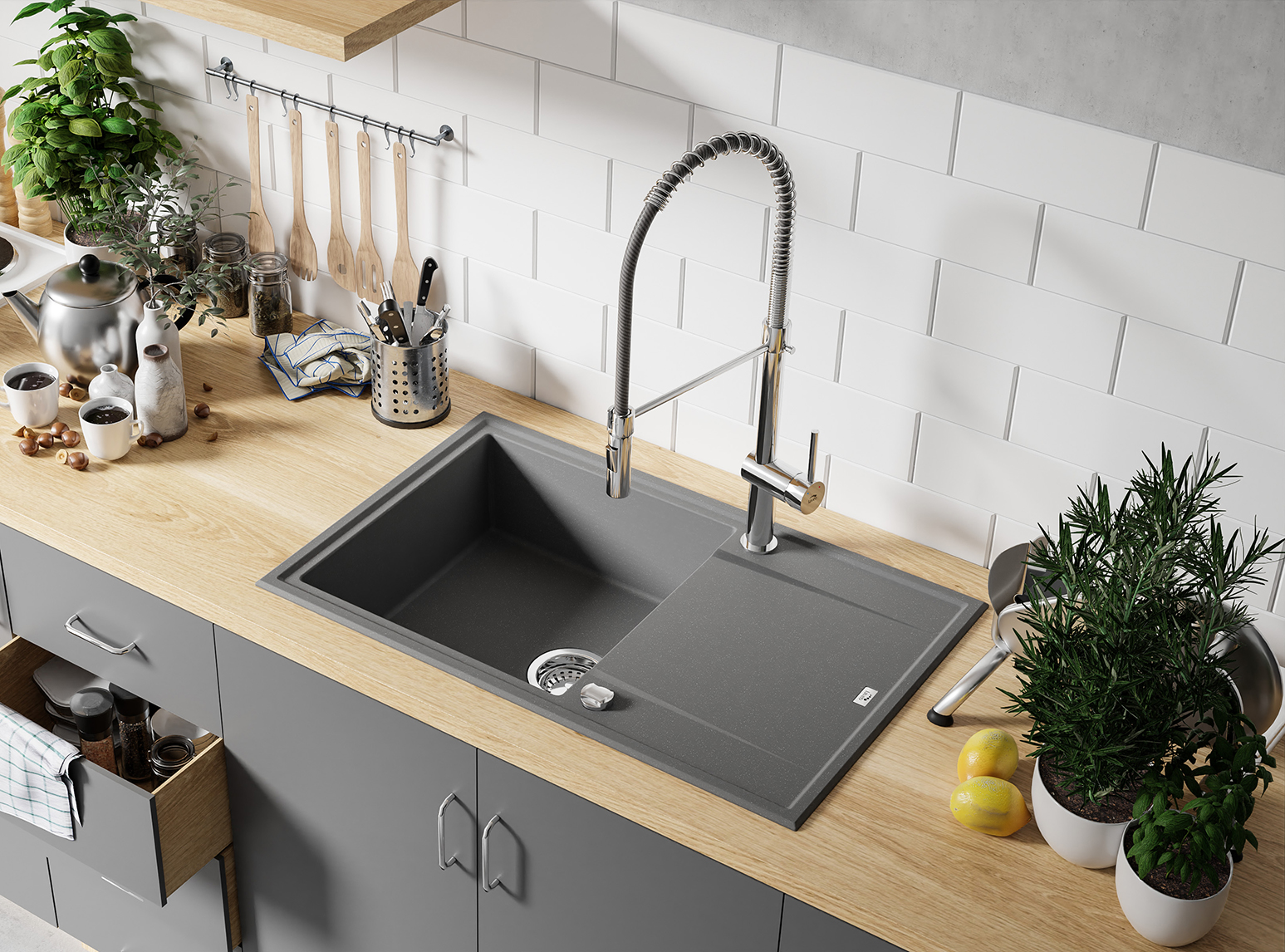
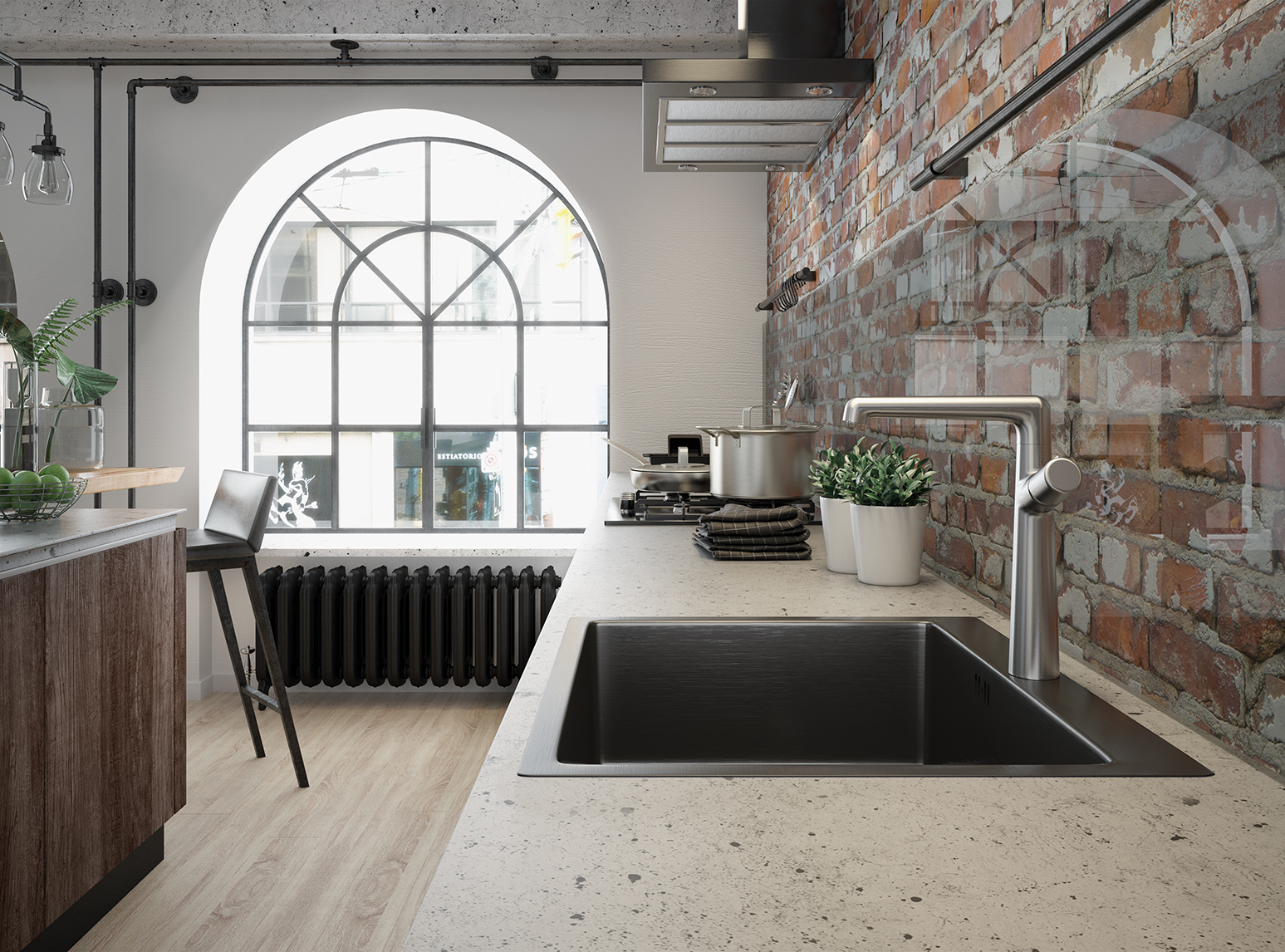
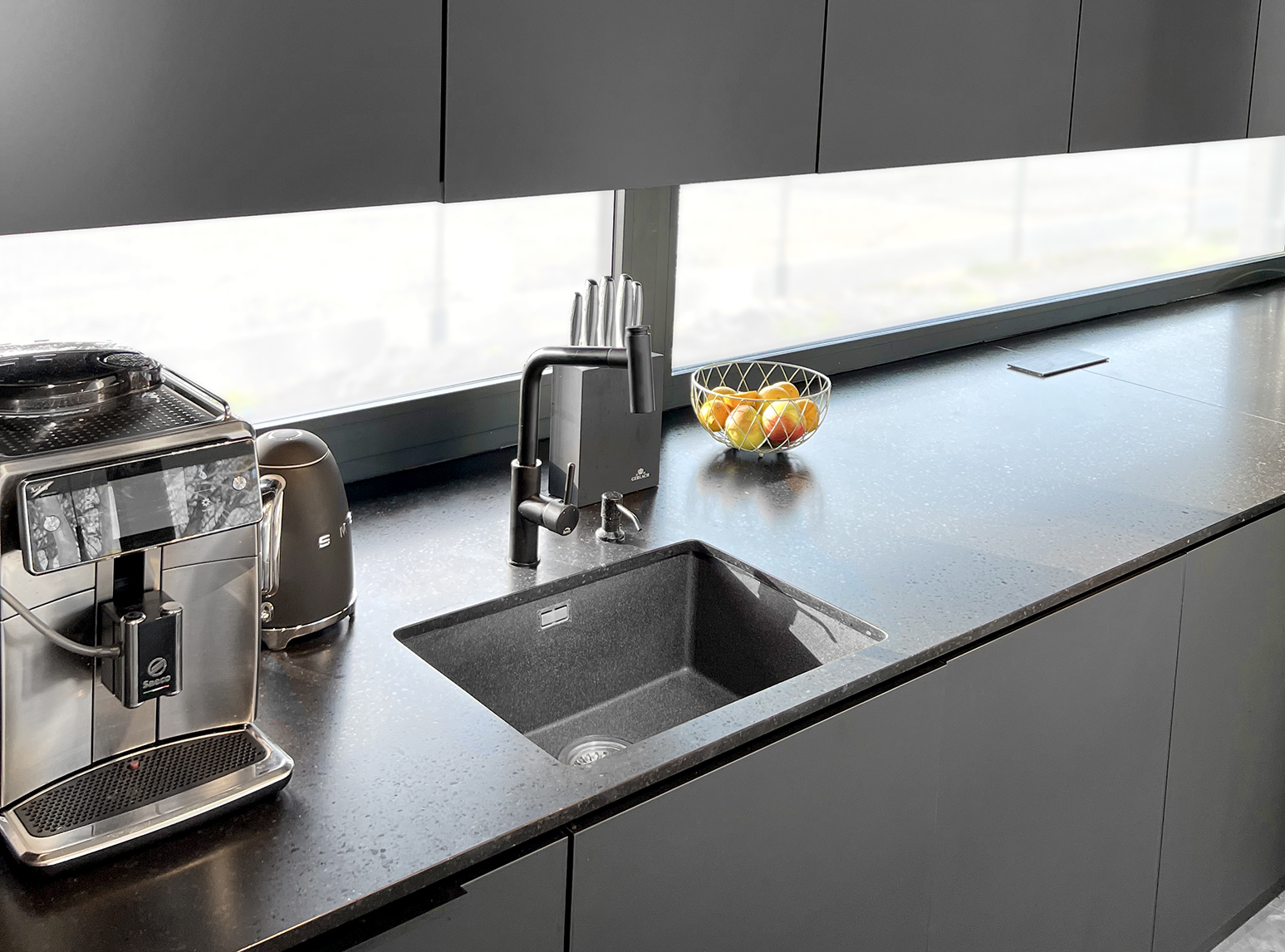
Steel sinks include also models to be placed on top of a cabinet to cover it fully. However, this solution is nowadays rather rare and usually limited to kitchens where such a sink was previously installed and a specific cabinet is left to be used.
There is also a special type of sinks - farmhouse sinks such as our Komodo model, i.e. sinks with a protruding front visible against the background of the kitchen furniture. These should be installed following the same procedure as for an inset sink, with an important exception. The cabinet that is to hold an apron front sink must have a special socle and shorter doors to make it possible to use the cabinet space under the sink.
When choosing a sink for your kitchen, you should pay attention to the size of the cabinet as it allows you to install only particular models. This is mainly determined by the size of the bowls. However, bear in mind that installing a 2-bowl sink with a drainboard, especially in small kitchens in blocks of flats, may prove not so much impossible as completely impractical.

>> If you would like to follow subsequent stages of different types of installation, see our granite sink installation guide.<<

In most cases, when buying a sink you get a complete set that not only allows you to install the sink in the worktop, but also to connect it to the plumbing system and the dishwasher. However, if you decide to replace the siphon - whether out of necessity or for visual reasons - make sure that the model you choose is suitable for your sink.
In short, there are no universal siphons to go with both steel and granite sinks. And this is not about the number of bowls, because it is obvious that the siphon has to handle all the drains (including the overflow) of your sink. The difference results mainly from the thickness of sink shells, which in the case of granite sinks can be several times thicker than in steel models. Another difference lies in the shape of the overflow. As a standard, in granite models the overflow is round, whereas steel sinks have rectangular holes. So when buying a siphon, remember to make sure what material it is designed for.
Resistance
This section, too, comprises more similarities than differences. Both materials - steel and granite - have a number of resistance properties that are particularly important in the kitchen.



Firstly, they can withstand temperatures of up to 250°C, which comes in handy when you want to put aside a pot that has just been on the cooker. They are also resistant to thermal shock, so you can, for example, safely rinse pasta in ice-cold water right after pouring boiling water into the sink. Both materials are exceptionally stain and discolouration resistant and are not afraid of lemon, tea, wine or beetroot juice.


However, if we were to be persistent and look for differences, impact and scratch resistance could be pointed out - although both materials exhibit both characteristics. Thanks to the right proportions of quartz sand and resin, granite is highly impact resistant. No damage to the surface will be made if you drop a pot or cutlery while washing up. And those who love cooking and do it frequently should pay attention to sinks with a textured surface (linen finish) characterised by an increased scratch resistance.
Cleaning
Each sink needs to be cleaned and maintained regularly. If you do it conscientiously, both steel and granite will serve you for many years. However, taking into account our daily habits and approach to cleaning, it is worth knowing a few rules.
|
It is best to clean granite sinks with agents dedicated to them. Their surface is sensitive to any abrasive particles, so do not ever use cleaning agents with abrasive elements or rough sponges. On the plus side, even if you do not have a specialised impregnation agent at hand, it is enough to rub the granite surface with edible vegetable oil. |
Steel can be treated with various liquids with no fear of damaging the sink surface. It is also a good choice for those who appreciate almost sterile cleanliness - even more invasive disinfectants are safe for steel sinks. |
|
|
>> Here you can read how to care for your granite sink<<
|
>> For more information on cleaning steel sinks read “How to clean a stainless steel sink" <<
|
